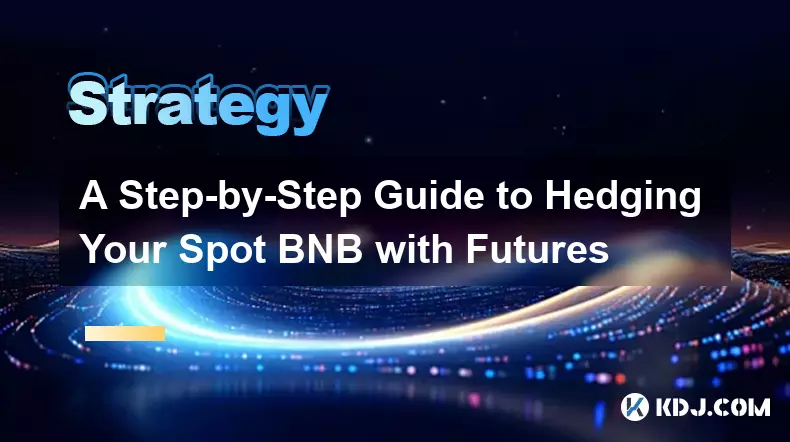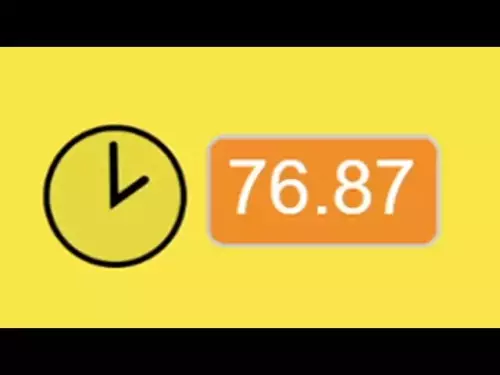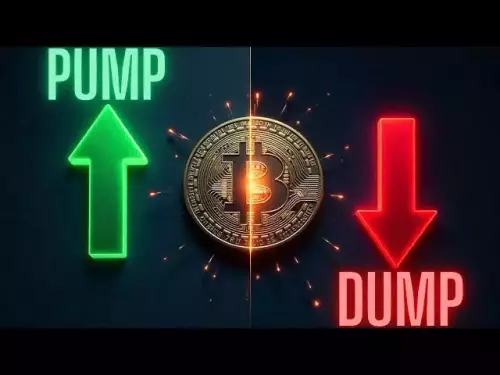-
 bitcoin
bitcoin $114206.058833 USD
-0.82% -
 ethereum
ethereum $4129.796871 USD
-1.31% -
 tether
tether $0.999964 USD
0.00% -
 xrp
xrp $2.640265 USD
-0.68% -
 bnb
bnb $1141.700384 USD
-0.18% -
 solana
solana $200.380665 USD
-2.05% -
 usd-coin
usd-coin $0.999888 USD
0.01% -
 dogecoin
dogecoin $0.200706 USD
-3.43% -
 tron
tron $0.299112 USD
-0.60% -
 cardano
cardano $0.668491 USD
-2.72% -
 hyperliquid
hyperliquid $46.924669 USD
-2.72% -
 chainlink
chainlink $18.286013 USD
-2.66% -
 bitcoin-cash
bitcoin-cash $555.734639 USD
-0.58% -
 stellar
stellar $0.323999 USD
-2.74% -
 ethena-usde
ethena-usde $0.999169 USD
0.00%
How to analyze CRO's on-chain data? Which indicators are helpful for trading?
Analyzing CRO's on-chain data, like transaction volume and active addresses, can offer insights into market trends and help traders make informed decisions.
May 02, 2025 at 04:43 pm

Analyzing on-chain data for cryptocurrencies like CRO (Crypto.com Coin) can provide valuable insights into the behavior and trends of the token. By understanding various on-chain indicators, traders and investors can make more informed decisions. This article will guide you through the process of analyzing CRO's on-chain data and highlight key indicators that can be helpful for trading.
Understanding On-Chain Data
On-chain data refers to the information that is recorded on the blockchain. This data includes transaction volumes, active addresses, and other metrics that can reveal the health and activity of a cryptocurrency. For CRO, on-chain data can be accessed through various blockchain explorers and analytics platforms such as Crypto.com's own explorer or third-party services like CoinMetrics and Glassnode.
Key On-Chain Indicators for CRO
When analyzing CRO's on-chain data, several indicators stand out as particularly useful for traders. These include:
- Transaction Volume: This indicator shows the total number of CRO tokens transferred on the blockchain over a specific period. High transaction volumes can indicate increased interest and activity in the token.
- Active Addresses: The number of unique addresses participating in transactions can provide insights into the user base's growth or decline. A rising number of active addresses often signals growing adoption.
- Exchange Flows: Monitoring the flow of CRO tokens into and out of exchanges can help predict potential price movements. Large inflows to exchanges might suggest upcoming selling pressure, while outflows could indicate accumulation.
- Network Growth: This metric tracks the rate at which new addresses are created on the network. A steady increase in network growth can be a positive sign for the long-term health of the token.
- Token Velocity: This measures how quickly CRO tokens are being spent and re-spent. A lower token velocity can indicate that holders are more likely to hold onto their tokens, which can be bullish for the price.
How to Access and Analyze CRO's On-Chain Data
To start analyzing CRO's on-chain data, follow these steps:
- Choose a Data Source: Select a reliable blockchain explorer or analytics platform that provides detailed on-chain data for CRO. Popular options include Crypto.com's own explorer, CoinMetrics, and Glassnode.
- Select Relevant Indicators: Based on your trading strategy, choose the indicators that are most relevant to your analysis. For example, if you're interested in short-term price movements, focus on transaction volume and exchange flows.
- Set Up Data Visualization: Use the platform's tools to visualize the data over different time frames. This can help you identify trends and patterns more easily.
- Analyze Trends: Look for trends in the data that could signal potential price movements. For instance, a sudden spike in transaction volume might precede a price increase.
- Combine with Other Analysis: On-chain data should be used in conjunction with other forms of analysis, such as technical and fundamental analysis, to form a comprehensive view of CRO's market position.
Using Transaction Volume for Trading
Transaction volume is one of the most straightforward indicators to analyze. A high transaction volume can indicate strong interest in CRO, which could lead to price increases. Conversely, a drop in volume might signal waning interest and potential price declines.
To use transaction volume for trading:
- Monitor Daily and Weekly Volumes: Keep an eye on both short-term and long-term trends in transaction volume. A consistent increase in volume over time can be a bullish sign.
- Compare with Price Movements: Look for correlations between transaction volume and price movements. If high volumes coincide with price increases, it could confirm a bullish trend.
- Watch for Volume Spikes: Sudden spikes in volume can precede significant price movements. Be prepared to act quickly if you notice such spikes.
Analyzing Active Addresses
Active addresses provide insights into the user base's engagement with CRO. An increasing number of active addresses can indicate growing adoption and interest in the token.
To analyze active addresses:
- Track Daily and Weekly Changes: Monitor the number of active addresses over different time frames to identify trends. A steady increase can be a positive sign.
- Compare with Transaction Volume: Look for correlations between active addresses and transaction volume. If both are increasing, it could signal strong network activity.
- Consider the Context: Understand the context behind changes in active addresses. For example, a sudden increase might be due to a new feature or promotion by Crypto.com.
Monitoring Exchange Flows
Exchange flows can provide early warnings of potential price movements. Large inflows to exchanges might indicate that holders are preparing to sell, which could lead to price declines. Conversely, outflows from exchanges can suggest accumulation and potential price increases.
To monitor exchange flows:
- Use Exchange-Specific Data: Some platforms provide data on specific exchanges. Use this to track flows to and from major exchanges where CRO is listed.
- Watch for Large Movements: Pay attention to significant inflows or outflows. These can be early indicators of market sentiment shifts.
- Combine with Other Indicators: Use exchange flow data in conjunction with other indicators like transaction volume and active addresses to form a more complete picture.
Assessing Network Growth
Network growth is a long-term indicator that can signal the health and adoption of CRO. A steady increase in new addresses being created on the network can be a positive sign for the token's future.
To assess network growth:
- Track New Address Creation: Use data from blockchain explorers to monitor the rate at which new addresses are being created.
- Compare with Historical Data: Look at historical trends in network growth to understand if the current rate is typical or exceptional.
- Consider External Factors: Be aware of external factors such as new partnerships or product launches that could influence network growth.
Evaluating Token Velocity
Token velocity measures how quickly CRO tokens are being spent and re-spent. A lower token velocity can indicate that holders are more likely to hold onto their tokens, which can be bullish for the price.
To evaluate token velocity:
- Calculate Token Velocity: Use data on transaction volumes and the total supply of CRO to calculate token velocity. A lower velocity suggests that tokens are being held for longer periods.
- Monitor Changes Over Time: Track changes in token velocity over different time frames to identify trends. A decreasing velocity can be a positive sign.
- Combine with Other Metrics: Use token velocity in conjunction with other metrics like active addresses and transaction volume to form a comprehensive view of CRO's market dynamics.
Frequently Asked Questions
Q: Can on-chain data predict CRO's price movements accurately?A: While on-chain data can provide valuable insights into market trends and sentiment, it is not a foolproof method for predicting price movements. It should be used in conjunction with other forms of analysis to form a more complete picture.
Q: How often should I check CRO's on-chain data?A: The frequency of checking on-chain data depends on your trading strategy. For short-term traders, daily or even hourly checks might be necessary. Long-term investors might find weekly or monthly checks sufficient.
Q: Are there any free tools available for analyzing CRO's on-chain data?A: Yes, several platforms offer free access to on-chain data for CRO. Crypto.com's own explorer provides basic data, while platforms like CoinMetrics and Glassnode offer more detailed insights, often with free tiers available.
Q: How can I use on-chain data to identify potential scams or fraudulent activities related to CRO?A: On-chain data can help identify unusual patterns that might indicate fraudulent activities. Look for sudden spikes in transaction volume from unknown addresses or large transfers to exchanges that do not align with typical market behavior. Always combine this with other research and due diligence.
Disclaimer:info@kdj.com
The information provided is not trading advice. kdj.com does not assume any responsibility for any investments made based on the information provided in this article. Cryptocurrencies are highly volatile and it is highly recommended that you invest with caution after thorough research!
If you believe that the content used on this website infringes your copyright, please contact us immediately (info@kdj.com) and we will delete it promptly.
- Essex Post Office, 5p Coins, and King Charles: A Royal Mint Revelation!
- 2025-10-23 10:30:16
- Waymo's Newark Airport AV Tests: Alphabet's AI Gamble Pays Off?
- 2025-10-23 10:30:16
- King Charles 5p Coins: A Royal Flush in Your Pocket?
- 2025-10-23 10:35:18
- Solana, Crypto Advisory, and Forward Industries: A New York Minute on the Future of Finance
- 2025-10-23 08:51:22
- MAGACOIN: Ethereum Whales Dive into the Hottest Presale of 2025
- 2025-10-23 08:51:22
- Kadena's End of the Road? KDA Token Plummets Amid Project Abandonment
- 2025-10-23 08:55:34
Related knowledge

A Simple Strategy for Scalping Ethereum (ETH) on the 5-Minute Chart
Oct 25,2025 at 01:54pm
A Simple Strategy for Scalping Ethereum (ETH) on the 5-Minute Chart This strategy focuses on short-term price movements of Ethereum using a 5-minute t...

A Beginner's Guide to Setting Up a Leveraged Ethereum (ETH) Grid Bot
Oct 27,2025 at 03:36pm
Understanding the Basics of a Leveraged ETH Grid Bot1. A leveraged Ethereum grid bot is an automated trading strategy designed to profit from price fl...

A Step-by-Step Guide to Hedging Your Spot BNB with Futures
Oct 27,2025 at 02:18pm
Understanding the Basics of Spot and Futures Markets1. Spot markets involve the immediate exchange of assets, such as BNB, at current market prices. W...

A Guide to Trading Avalanche (AVAX) Perpetual Contracts for Beginners
Oct 25,2025 at 11:36pm
Understanding Avalanche (AVAX) Perpetual Contracts1. Perpetual contracts are a type of derivative product that allows traders to speculate on the pric...

How to Reduce Liquidation Risk on a High-Leverage BNB Position?
Oct 25,2025 at 05:36pm
Understanding Liquidation Mechanics in High-Leverage BNB Trading1. Liquidation occurs when the value of a leveraged position drops to a level where th...

How to Day Trade Bitcoin (BTC) Futures: A Complete Guide
Oct 28,2025 at 12:24am
Understanding Bitcoin Futures and Their Market Mechanics1. Bitcoin futures are derivative contracts that allow traders to speculate on the future pric...

A Simple Strategy for Scalping Ethereum (ETH) on the 5-Minute Chart
Oct 25,2025 at 01:54pm
A Simple Strategy for Scalping Ethereum (ETH) on the 5-Minute Chart This strategy focuses on short-term price movements of Ethereum using a 5-minute t...

A Beginner's Guide to Setting Up a Leveraged Ethereum (ETH) Grid Bot
Oct 27,2025 at 03:36pm
Understanding the Basics of a Leveraged ETH Grid Bot1. A leveraged Ethereum grid bot is an automated trading strategy designed to profit from price fl...

A Step-by-Step Guide to Hedging Your Spot BNB with Futures
Oct 27,2025 at 02:18pm
Understanding the Basics of Spot and Futures Markets1. Spot markets involve the immediate exchange of assets, such as BNB, at current market prices. W...

A Guide to Trading Avalanche (AVAX) Perpetual Contracts for Beginners
Oct 25,2025 at 11:36pm
Understanding Avalanche (AVAX) Perpetual Contracts1. Perpetual contracts are a type of derivative product that allows traders to speculate on the pric...

How to Reduce Liquidation Risk on a High-Leverage BNB Position?
Oct 25,2025 at 05:36pm
Understanding Liquidation Mechanics in High-Leverage BNB Trading1. Liquidation occurs when the value of a leveraged position drops to a level where th...

How to Day Trade Bitcoin (BTC) Futures: A Complete Guide
Oct 28,2025 at 12:24am
Understanding Bitcoin Futures and Their Market Mechanics1. Bitcoin futures are derivative contracts that allow traders to speculate on the future pric...
See all articles










































































